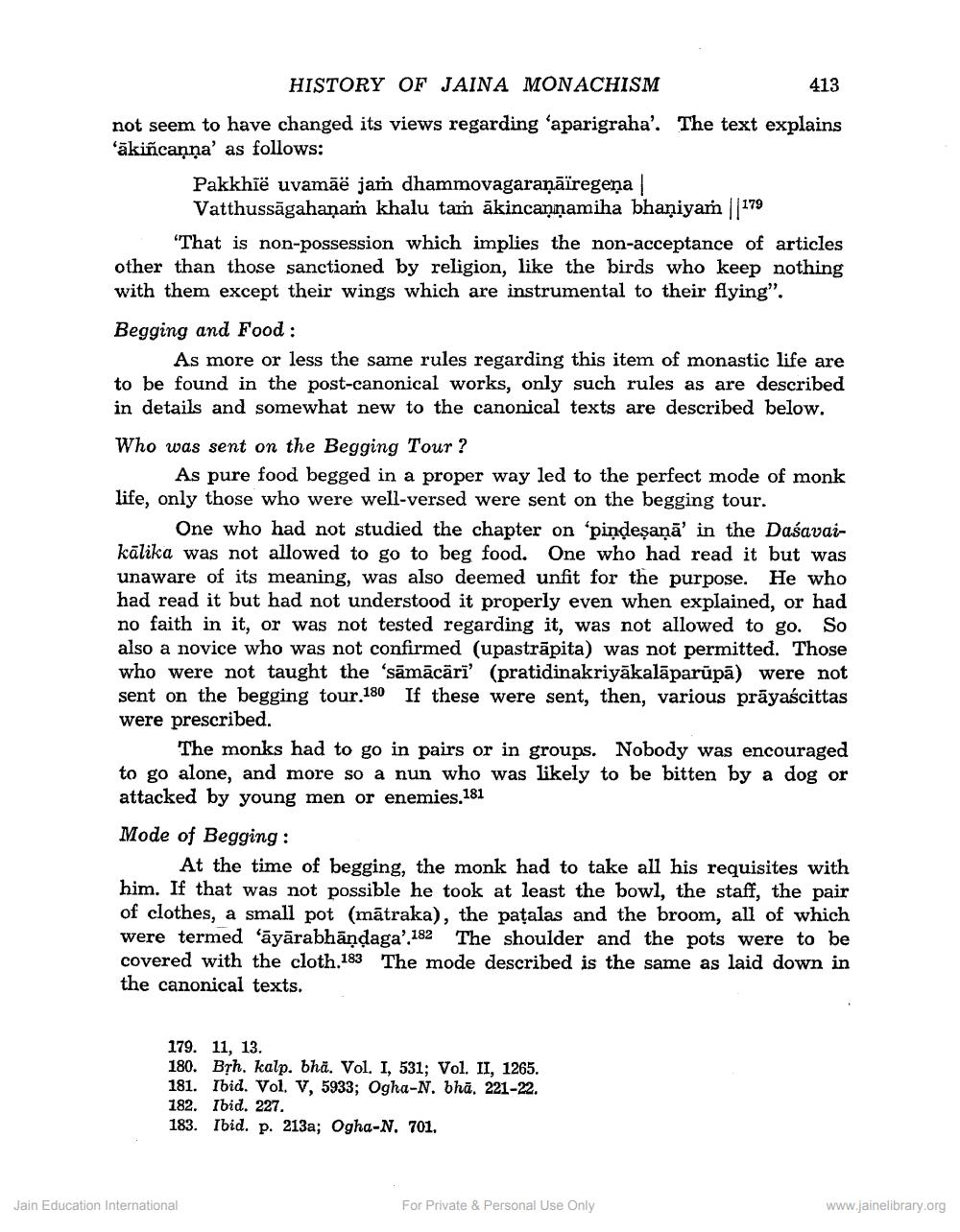________________
HISTORY OF JAINA MONACHISM
413 not seem to have changed its views regarding 'aparigraha'. The text explains 'ākiñcaņņa' as follows:
Pakkhīë uvamāë jam dhammovagaraņāïregena
Vatthussāgahanaṁ khalu tam ākincannamiha bhaniyam ||179
"That is non-possession which implies the non-acceptance of articles other than those sanctioned by religion, like the birds who keep nothing with them except their wings which are instrumental to their flying".
Begging and Food :
As more or less the same rules regarding this item of monastic life are to be found in the post-canonical works, only such rules as are described in details and somewhat new to the canonical texts are described below. Who was sent on the Begging Tour ?
As pure food begged in a proper way led to the perfect mode of monk life, only those who were well-versed were sent on the begging tour.
One who had not studied the chapter on 'pindeşaņā' in the Daśavaikālika was not allowed to go to beg food. One who had read it but was unaware of its meaning, was also deemed unfit for the purpose. He who had read it but had not understood it properly even when explained, or had no faith in it, or was not tested regarding it, was not allowed to go. So also a novice who was not confirmed (upastrāpita) was not permitted. Those who were not taught the 'sāmācārī (pratidinakriyākalāparūpā) were not sent on the begging tour.180 If these were sent, then, various prāyaścittas were prescribed.
The monks had to go in pairs or in groups. Nobody was encouraged to go alone, and more so a nun who was likely to be bitten by a dog or attacked by young men or enemies.181
Mode of Begging:
At the time of begging, the monk had to take all his requisites with him. If that was not possible he took at least the bowl, the staff, the pair of clothes, a small pot (mātraka), the patalas and the broom, all of which were termed 'āyārabhāndaga'.182 The shoulder and the pots were to be covered with the cloth.183 The mode described is the same as laid down in the canonical texts.
179. 11, 13. 180. Brh, kalp. bha. Vol. I, 531; Vol. II, 1265. 181. Ibid. Vol. V, 5933; Ogha-N. bhā. 221-22. 182. Ibid. 227. 183. Ibid. p. 213a; Ogha-N. 701,
Jain Education International
For Private & Personal Use Only
www.jainelibrary.org




